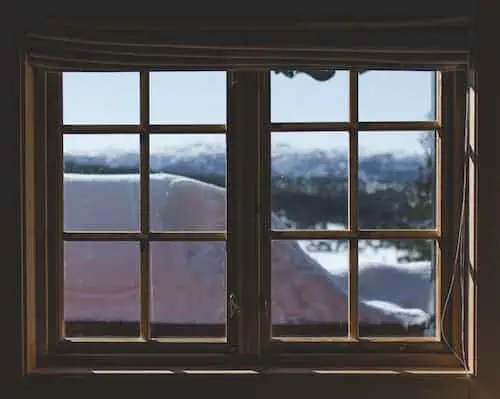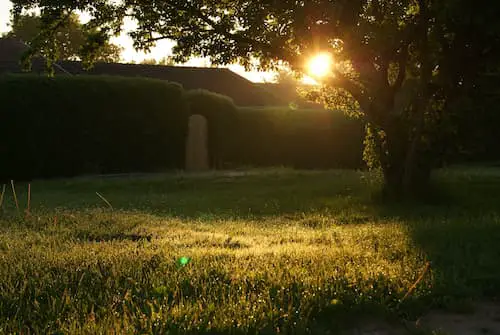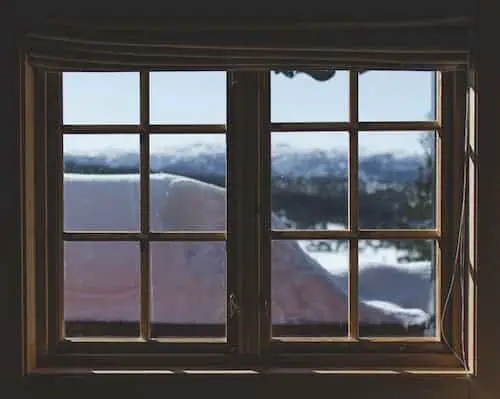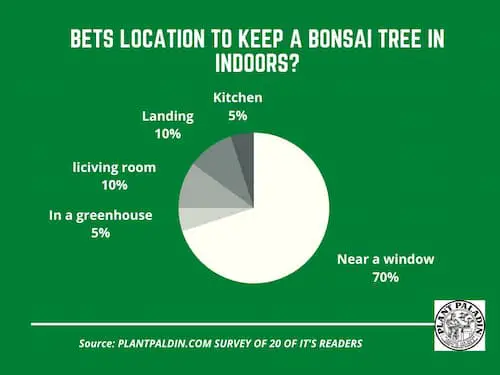This website is supported by its readers. If you click one of my links I may earn a commission. I am also a participant in the Amazon affiliates program and I will also earn a commission from qualified purchases.

So you’ve just purchased your brand new bonsai tree for your home, have managed to keep your bonsai alive on the treacherous journey home, and now you are left with one final question. Where should I put my bonsai tree in my house? This is the question I had when I first bought my indoor bonsai: Where exactly is the best indoor location for your tree?
The best space for your indoor bonsai is near a south-facing window. This will ensure that your bonsai tree gets enough sunlight. Regardless of their sub-species, Bonsai trees require 4 to 8 hours of direct sunlight daily, so placing them near a window will result in a happy, healthy tree.
Placing bonsai away from a window or light source will result in slow growth for your bonsai and, if left away from a light source for too long, can end in the death of your tree.
Hardy bonsai tree species, such as Junipers, can be placed outdoors in a backyard in most mild climates.
So what exactly are the differences between species? Keep reading to find out more!
Just a quick heads up, over the past three years of running Plantpaladin, hundreds of people have asked for product recommendations. As such, You can find my favorite indoor bonsai tree here (link takes you to Bonsaiboy), my favorite outdoor bonsai tree (link takes you to Bonsaiboy), or have a look at all the products I recommend here.
Where should I put a bonsai tree in my house?
To get to the bottom of where should I put a bonsai tree in my house, I got in touch with a few bonsai experts, visited my local botanical gardens, and even got in touch with 20 plant paladin readers.
All to ensure you had the most detailed post possible.
To summarize:
Where should I put a bonsai tree in my house – quick facts
- Keeping your bonsai as close to a south-facing window as possible will be the best location for most indoor bonsai trees kept in a house.
- Regardless of the bonsai tree species, most bonsai need anywhere from 4 to 8 hours of direct sunlight daily.
- Keeping your bonsai then near a south-facing window will ensure it gets enough sunlight resulting in a happy, healthy tree.
- For best results, then consider placing your bonsai tree on a windowsill.
- Other great locations to keep your bonsai tree in would include a conservatory, a garage with big windows, or a kitchen with big windows ( that is not overly cluttered – we will get to this later)
- Avoid keeping bonsai trees in lofts or basements, as these typically get limited natural sunlight.
- Tropical bonsai species such as Jade or Ficus will benefit by being kept as close to windows as possible.
- Other species, however, such as Oak or hardy species, such as Juniper, can be left in your backyard year-round.
- The main parameters that you need to consider when deciding where to put a bonsai tree in your house include light, humidity, temperature, and if there is a breeze.
- If you keep pets, it is also essential that the location you choose is not frequented by them, as bonsai can be toxic to some pets.
- Finally, if you live in an apartment or small space that only gets a little light, consider investing in artificial grow lights that mimic natural light and allow you to grow a bonsai tree successfully.
This is a lot of information, so let’s discuss this in more detail, starting with the best locations to keep your bonsai tree in.

Best locations to place a bonsai tree in your house?
So now we know it is possible to place a bonsai tree in your house; what locations typically work well for placement?
A south-facing window

Without a doubt, my number one pick for placing a bonsai tree must be a south-facing window.
Windows facing south typically get much more sunlight than their north-facing counterparts.
This is crucial as bonsai trees require a minimum of 4 hours of direct sunlight per day and up to 8 hours per day spent by the species.
As bonsai trees require so much sunlight, even moving them a few feet away from a window can impact their health, with bonsai trees grown near a window almost always being healthier than those grown one or two meters away.
As such, for best results, if keeping your bonsai tree indoors, place it on a windowsill.
The only caveat to this will be if it is sweltering.
In extreme heat conditions (typically those higher than 35 degrees C or 95 degrees F), the window will act as a magnifying glass and can burn your bonsai, so move away during these conditions.
The downside to watering a bonsai tree so far would be watering your tree, which can get slightly messy if waiting directly on your window sill.
Ensure you also consider how frequently you open said window, as this can impact the breeze and humidity requirements that bonsai trees may be sensitive to.
A conservatory
Another great location to keep your bonsai tree is a conservatory or house extension.
While only some are lucky enough to have a conservatory, if you have one or are planning on building one, these make fantastic locations for your bonsai tree.
The big bright windows and shelter from the elements will make them ideal for growing bonsai trees and plants.
The only major caveat to this, however, is that conservatories may need to be better in the middle of summer or cold winters.
This is because they are notorious for mimicking what the outdoor elements are like.
As such, you may need to move your bonsai tree if temperatures drop too much or become too warm in your conservatory.
In your backyard

Don’t get me wrong; this option only works for some. After all, tropical bonsai tree species or succulent bonsai species such as Jade will not tolerate colder milder temperatures.
Consider leaving these trees in your backyard if you have just purchased a hardy bonsai tree, such as a Willow, Pine, or Juniper tree.
These species love the cool, cold air and are ideal for being left in a bright spot in your backyard year-round.
On top of this, these species work well being planted directly in the ground and can be the building blocks of a beautiful bonsai garden.
On a desk on a landing
Another good option I found for keeping bonsai is in your landing, especially if you have a lot of windows next to your door.
This will allow plenty of sunlight for your bonsai and the occasional breeze as your front door opens.
Now this will only be viable for those of you with a landing with a door, but if you have many windows or bright spaces, this too can be an ideal location to place your bonsai tree.
Keeping bonsai trees in garages.
Keeping bonsai in a garage with large windows is commonplace, especially in winter.
It’s one of the reasons why so many people keep their bonsai in cold frames in their garages when temperatures outdoors drop too low for bonsai.
That being said, as most garages are cool year-round, they also make for an ideal location for your bonsai.
The only caveat is that there is still space for them to get sunlight.
If your garage is cluttered or only gets light in it when the door is open, I would avoid this, as you may damage your tree further.
Greenhouse

If you are lucky enough to have the money to invest in a greenhouse, then this would be the best place to keep your bonsai tree.
You can directly manage the temperature of the tree to match its ideal location, and the glass windows will ensure your tree gets enough sunlight.
Check out my post here to learn how to build your bonsai greenhouse.
Rooms you should avoid keeping your bonsai in
So now we know what rooms you should keep your bonsai in and what rooms should be avoided altogether.
Bathroom
In recent years, there has been a big trend to move indoor plants into the bathroom.
For example, some, such as aloe plants, are used for medicinal purposes.
Bonsai trees, however, should not be placed in a bathroom at any cost.
Most bonsai trees only need to be watered once to twice per week, so keeping them in a bathroom will most likely become waterlogged.
This can then lead to root rot or other fungal infections.
Basements
The basements’ most significant problem is not getting the sunlight requirements for bonsai trees.
As mentioned, these trees need a light breeze and sunlight to thrive; however, keeping them locked in basements increases your chances of a bonsai tree with yellowing leaves and shriveled branches.
Living rooms
Keeping bonsai trees in living rooms is a good thing per se, especially if you have big bright windows.
However, one of the significant problems with doing so, especially if you have children, pets, or a lot of visitors, is that they are in high-traffic areas.
This means the chances of someone dropping or damaging your bonsai will be significantly higher than if it was located in a low-traffic area.
Potentially kitchens
These can be a mixed bag as they usually have big bright windows that make for ideal bonsai tree locations.
The downside is most of us have kitchens that could be more cluttered and have a lot of traffic.
As such, consider how clean and spaced your kitchen is before planting your bonsai tree.
I live in an apartment; where can I put my bonsai?
With rising house prices and the cost of living seemingly never dropping, many of us must be lucky enough to rent and own our homes.
As such, what is the best place to keep your bonsai tree when living in an apartment?
The best location to keep a bonsai tree if you live in an apartment is near a window on a flat surface. This will ensure your bonsai gets enough sunlight and will allow you to not worry about water drippage from the pot.
Failing this, and if you live in an apartment without any windows, place your bonsai in the corner of your room, on a flat surface, or desk.
Then invest in grow light which will help ensure your bonsai gets adequate sunlight.
Avoid placing your bonsai in your apartment bathroom.
What is essential when growing your bonsai tree indoors
So now you know the best locations to grow your bonsai tree, what are some extra essential factors to know when growing your bonsai tree indoors?
To grow a bonsai tree successfully indoors then, you will need to take note of the following:
- Sunlight
- Temperature
- Humidity
- Breeze
- Easy access
Let’s break these down in more detail.
Sunlight
We’ve touched upon this several times throughout this post, but the most critical factor when successfully growing a bonsai tree indoors must be sunlight.
Like all other plants, bonsai trees need sunlight to photosynthesize and create food.
Most bonsai trees require between 4 and 8 hours of direct or partial sunlight daily.
As such, ensure whatever location you select has plenty of access to sunlight.
Failing natural sunlight, consider investing in grow lights that can be relatively low cost, use limited power, and contain the entire light spectrum is ideal for your bonsai trees’ health.
Temperature
The biggest reason for growing bonsai trees indoors is to match the bonsai tree’s natural climate.
Most bonsai trees are tropical and thrive in temperatures between 12 to 25 degrees C. (59-77F)
Most of us live in mild climates, so this isn’t possible outdoors.
Instead, ensure that you maintain a consistent temperature year-round in the room you keep your bonsai.
Humidity
Most bonsai tree species also require a degree of humidity in the air.
This will help prevent them from drying out when they become dry from lack of watering.
Tropical bonsai like Jade will require greater humidity than, say Chinese Elm bonsai however, the best way to do this is by keeping your bonsai in a humidity tray.
This will help add moisture back into your bonsai in between watering sessions.
I would avoid keeping your bonsai in a bathroom as this may be slightly too much moisture for your tree.
Breeze
Bonsai trees need a gentle breeze.
This will help strengthen the branches of your bonsai and prevent them from dropping.
Nutrients are often passed around air currents outdoors. To capitalize on this, aim to keep your bonsai in a space with a natural breeze.
Cracking open a nearby window or putting a fan near your tree can work wonders.
Easy access
Finally, ensure the location you keep your bonsai is accessible for you to get to.
You will frequently be pruning, wiring, and training your bonsai tree. If you keep it on a high shelf or hard-to-reach location, you will be causing yourself a lot of pain.
Should bonsai be on a window?
Bonsai trees should be kept on a window if growing indoors. Keeping your bonsai on your windowsill or between 1 to 1.5 meters away from the window will be ideal. This will allow your bonsai tree to get ample sunlight and stay healthy year-round.
Is it okay to keep bonsai indoors?
Tropical and sub-tropical bonsai trees can be grown indoors as long as enough light, warmth, and humidity are provided. This includes beginner-friendly species such as Jade, Ficus, and Chinese Elm. Most non-tropical bonsai, such as Juniper, must be kept outdoors.
Where do you put bonsai for good luck?
Place your bonsai tree in the south bagua for good luck. This aligns with feng shui elements using the most prominent aspect of the bonsai tree, its wood.
Do indoor bonsai trees need sunlight?
Bonsai tree species indoors need between 4 to 8 hours of direct or particle sunlight. For best results, keep near a window to get ample sunlight. Consider investing in an artificial LED grow light with a full-color spectrum if you have limited windows or natural sunlight.
Where should you put a bonsai tree in your house in winter?
So what about outdoor bonsai that need to be moved indoors during the window?
This typically includes species such as Oak, Willow, or Maple varieties.
In this situation, the best this to do is to place your bonsai in a cold garage.
Most bonsai trees need the cold to induce a dormant period.
This allows your bonsai to regenerate before the spring and summer growing seasons.
For best results, consider investing in a bonsai cold frame. You can read more about this here.
What is essential when growing your bonsai tree indoors?
Most tropical and sub-tropical bonsai species, such as Jade, Ficus, Olive, and Chinese Elm bonsai, all do well indoors. These trees are used in warmer environments that indoor conditions can successfully mimic.
I’ve listed a few of the most common bonsai tree species below:
Bonsai Tree Species | Can be successfully grown indoors? | Ideal Indoor Location |
Chinese Elm | Yes | Bright, indirect sunlight - near a window, conservatory or bright space indoors. |
Ficus | Yes | Bright, indirect sunlight - near a window, conservatory or bright space indoors. |
Fukien Tea | Yes | Bright, indirect sunlight - near a window, conservatory or bright space indoors. |
Jade | Yes | Bright, indirect sunlight - near a window, conservatory or bright space indoors. |
Olive | Yes | Bright, indirect sunlight - near a window, conservatory or bright space indoors. |
Juniper | No | Outdoors |
Scots Pine | No | Outdoors |
Apple | No | Outdoors |
Lemon | No | Outdoors |
Crabapple | No | Outdoors |
Cherry | No | Outdoors |
Willow | No | Outdoors/ indoors during winter |
Oak | No | Outdoors/ indoors during winter |
What is the best bonsai tree to keep indoors?
Ficus, Jade, Fukien Tea, and Elms are the best indoor bonsai trees. These trees are low maintenance and can be grown successfully with a grow light. Succulents and other tropical species also thrive in indoor conditions.
To read more about this, check out my post that goes into more detail on several of the best indoor bonsai species here.
Survey results – where should I put a bonsai tree in my house?
Finally, I wanted to ask 20 plant paladin readers where to put a bonsai tree in my house.
Here are the results:

My top picks for the gear you will need!
So like I mentioned earlier, over the past three years of running PlantPaladin, hundreds of people have asked me for my recommendations on the best bonsai gear on the market.
Having spent thousands of dollars on bonsai items these past few years and tested at least 100 bonsai-specific products, I’ve listed my favorite products below – All of which I highly recommend and think you can get great value.
They can purchase directly by clicking the link to take them to Amazon.
Bonsai Tool Set: One of the significant challenges I’ve had is finding a toolset that was not only durable but didn’t break the bank. SOLIGT has recently developed a fantastic bonsai tool set that covers all the tools you need to trim, prune, and repot your trees. – You can grab it here.
Complete Bonsai Set: Many of you will want to grow your bonsai trees entirely from scratch, but finding the varicose seeds, pots, and other items in one place can be challenging. Leaves and Sole then have created a complete bonsai set that I’ve personally used that ticks all the boxes. You can grab it here.
Bonsai wire: The number of times I’ve run out of wire for my bonsai or purchased cheap bonsai wire that doesn’t do the job is embarrassing for me to admit. After a lot of trial and error, I found that using Hotop’s aluminum bonsai wire is one of the best options on the market. This can easily be used for both indoor and outdoor bonsai. You can grab it here.
This post was written by Fehed Nicass, who has been passionate about bonsai and gardening for over three years.
